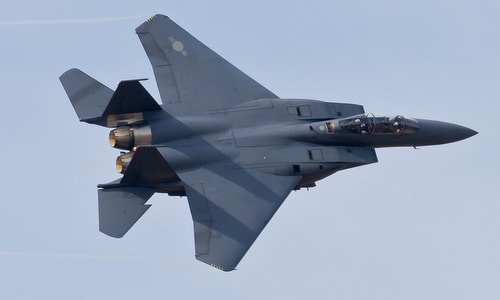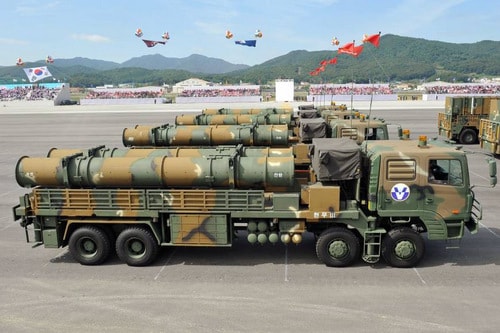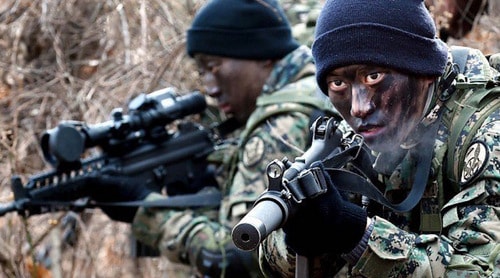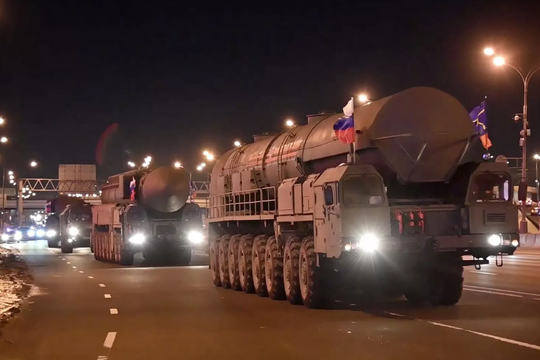South Korea's two plans to prevent North Korea from nuclear attack
The South Korean military has come up with two bold plans to thwart a nuclear attack from North Korea.
 |
The F-15K fighter is the focus of the KC plan. Photo: Flickr. |
To counter the growing threat from North Korea's nuclear and missile programs, South Korea is strengthening its preemptive strike capabilities with ballistic missiles, cruise missiles, air force and marines.
The country's military has prepared two plans called "Kill Chain" (KC) and "Kill Massive Punishment and Retaliation" (KMPR), mobilizing hundreds of missiles and special forces racing against time to prevent Pyongyang from launching a destructive nuclear attack, according to National Interest.
Military expert Kyle Mizokami said Seoul does not possess nuclear weapons, leaving it with very few options to deal with Pyongyang. Instead of developing direct nuclear deterrents, South Korea has only increased its conventional arsenal, including RQ-4 Global Hawk reconnaissance aircraft, intelligence, surveillance and reconnaissance (ISR) equipment, special forces, cruise missiles and ballistic missiles.
North Korea's nuclear-tipped missiles, such as the Nodong and Musudan, are mobile launchers that are difficult to detect and destroy. Pyongyang is also developing submarine-launched ballistic missiles to increase its preemptive strike capabilities.
The South Korean military cannot target missile launchers in the event of war. Instead, Seoul would target Pyongyang's key link: its nuclear command and control system, including its leadership and communications network.
The core of the KMPR is the ability to detect signs of North Korea preparing for a nuclear attack. RQ-4 Global Hawk Block 30 and RC-800 reconnaissance aircraft will be deployed to monitor and intercept communications in North Korea. The goal is to detect signs such as missile launchers being deployed and dispersed, North Korean leadership evacuating cities, and ballistic missile submarines leaving bases.
Once the enemy is confirmed to be preparing for a nuclear attack, the South Korean government will deploy the "Kill Chain" plan. South Korean special forces, supported by the US Air Force, will be sent into North Korea to scout out suspected ballistic missile sites. They will use heavy weapons to destroy the sites or hide and guide cruise missiles and air strikes.
 |
Cruise missiles could target North Korea's command center. Photo: Wikipedia. |
The main firepower in the KC plan is tactical fighters, cruise missiles and ballistic missiles. The ROK Air Force has about 60 F-15K Slam Eagles, the best fighter on the Korean Peninsula. They are equipped with AGM-84E SLAM-ER ground-attack cruise missiles with a range of 274 km. The goal of the AGM-84E is to eliminate mobile launchers, support equipment and North Korean air defense systems.
Seoul can also destroy enemy command systems with the German Taurus KEPD 350 cruise missile. South Korea has purchased 260-270 of these missiles to integrate into F-15K fighters. KEPD 350 is a subsonic cruise missile with a range of nearly 500 km, which can attack targets north of Pyongyang when launched from Seoul. The missile's advanced warhead can destroy fortified underground bunkers.
South Korea may also use the Hyunmoo missile in the KC plan. The Hyunmoo-2B version is a ballistic missile with a range of nearly 500 km, which can cover most of North Korea. The new Hyunmoo-2C model has a range of up to 800 km, far enough to destroy any important target across North Korea.
The Hyunmoo-2B/C is likely to be used to destroy military bases and government headquarters in Pyongyang, as well as missile bases across North Korea. In addition, the Hyunmoo-3B cruise missile variant allows South Korea to launch long-range strikes without deploying F-15K fighters.
When the KC plan is activated, hundreds of conventionally armed missiles and aircraft will be launched into North Korea to hunt down targets, destroy mobile missile launchers, assassinate North Korean leader Kim Jong-un or destroy communications equipment. This is an ambitious program and one of the few conventional deterrent plans to deal with North Korea's nuclear weapons.
Meanwhile, KMPR is a contingency plan to destroy North Korea's nuclear weapons and neutralize its leadership. It is essentially an improved version of the KC plan, but focuses on assassinating the enemy's leadership.
 |
Special forces soldiers of the South Korean Spartan 3000 unit. Photo: Funker. |
Under the KMPR plan, South Korea would send 3,000 marines into North Korea on a suicide mission. The unit, nicknamed "Spartan 3000," would be trained to eliminate Pyongyang's wartime command system, leaving it completely paralyzed. It would likely launch an amphibious assault on Pyongyang if war broke out.
However, the possibility of South Korea making a definitive conclusion about North Korea’s nuclear attack remains a big question mark. The KC and KMPR plans, if launched, could trigger a second Korean War, a war that would have no end, leaving hundreds of thousands dead and two Koreas devastated for years. This puts enormous pressure on South Korean military and intelligence leaders.
According to VNE
| RELATED NEWS |
|---|

.jpg)




